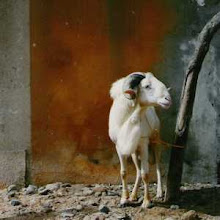Source: wikipedia
"Upon Winogrand's death in 1984, there were almost 3000 rolls of exposed but unprocessed film that ended up as part of the CCP holdings. The panel of curators had excluded this work on ethical grounds so as not to violate the artist's editorial rights by making choices from negatives and contact sheets Winogrand had never seen. Done in the later years of his life, one is curious about the evolution (or demise) of this photographer's career, and the absence of these rolls makes viewing them all the more intriguing. Some images from this latent opus were included in the book Figments From the Real World (1988), and that brief preview showed little more than a curator's desperate search for more of the same. The recent decision to ignore this lingering blindspot arguably has more to do with an effort to maintain a modernist legacy of authorship, taking the Szarkowskian notion of a photographer's eye quite literally. Given Winogrand's persistent reliance on others to edit and promote his work, it appears extremely contrived to invalidate the undeveloped as 'unseen', while token images edited from a massive volume (the monkey and typewriter collaboration springs to mind) are exemplary of a unique 'vision'. In a retrospect made current by the CCP events, Winogrand's despondent decision to file undeveloped rolls might have had something to do with the dominant role editors and curators played in his creative life."
Source: Game over? - Gary Winogrand exhibition
"Court-circuitant le choix, le tirage et jusqu'au développement (il ne reste que l'image latente), le mouvement s'emballe et abolit la photographie (disparition de toute « énonciation ») même s'il reste un mode de vie et d'expérience pour un individu : « [his] ambition was not to make good pictures, but through photography to know life » [Szarkowski, Figments, 41]. "
Source: Qu'est-ce qu'un regard photographique ? / Garry Winogrand au fil du rasoir / Jean KEMPF

Aucun commentaire:
Enregistrer un commentaire